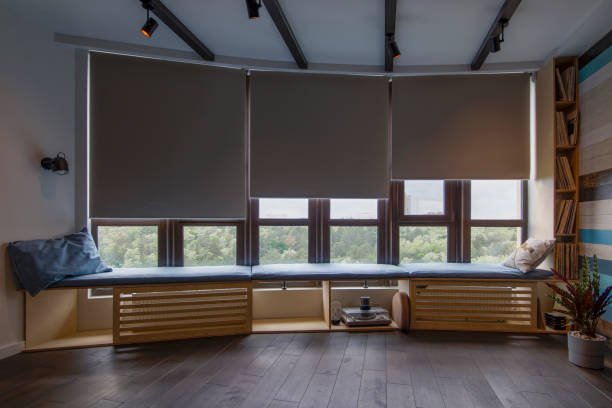Are you tired of looking at the same old brick walls day after day? Do you dream of a fresh and vibrant space that reflects your unique style? Look no further! In this article, we will explore the transformative power of paint and how it can breathe new life into old brick walls. Whether you're a homeowner looking to update your living space or a business owner wanting to revamp your storefront, painting your brick walls can create a stunning visual impact. From bold and vibrant colors to subtle and sophisticated hues, the possibilities are endless. Not only does a fresh coat of paint enhance the aesthetic appeal of your space, but it also protects your walls from weathering and damage. So why wait? Let's dive in and discover how you can unleash the potential of your brick walls with the simple stroke of a brush.
Benefits of Painting Old Brick Walls
Painting old brick walls comes with a myriad of benefits that go beyond just the visual appeal. One of the most significant advantages is the ability to completely transform the look and feel of a space. Whether you want to create a cozy and rustic atmosphere or a modern and industrial vibe, painting your brick walls can help you achieve the desired ambiance.
Additionally, painting your brick walls provides an extra layer of protection against the elements. Over time, weathering and exposure to the elements can cause brick walls to deteriorate. By applying a coat of paint, you can protect the bricks from moisture, reducing the risk of cracks and damage.
Furthermore, painted brick walls are much easier to clean and maintain compared to bare brick. Dust and dirt tend to accumulate on the rough surface of bare brick, making it a challenging task to keep the walls looking clean. However, with painted brick walls, a simple wipe-down with a damp cloth is usually sufficient to maintain their appearance.
Preparing the Brick Surface for Painting
Before you start painting your old brick walls, it is crucial to properly prepare the surface to ensure the best results. The first step is to thoroughly clean the brick walls to remove any dirt, dust, or debris. A power washer or a stiff-bristle brush can be used to scrub the surface and remove any stubborn stains.
Once the walls are clean and dry, it is essential to inspect them for any cracks or loose mortar. These should be repaired before painting to ensure a smooth and even finish. Use a mortar repair product to fill in any cracks or gaps, and allow it to dry completely.
To create a suitable surface for the paint to adhere to, it may be necessary to apply a primer. A primer helps seal the pores of the brick and provides a better surface for the paint to bond to. Choose a primer specifically designed for masonry surfaces and apply it evenly using a roller or brush.
Choosing the Right Paint for Old Brick Walls
Selecting the right paint for your old brick walls is crucial to achieving the desired result. When choosing a paint, consider the type of finish you prefer, as well as the durability and longevity you desire.
For a more traditional and timeless look, consider using mineral-based limewash paint. These paints are breathable, allowing moisture to escape from the bricks and preventing peeling or cracking. They also provide a beautiful matte finish that enhances the natural texture of the brick.
If you prefer a more modern and sleek appearance, consider using acrylic paint. Acrylic paints are known for their durability and resistance to fading, making them an excellent choice for outdoor brick walls. They also offer a wide range of color options, allowing you to experiment with bold and vibrant shades.
For interior brick walls, water-based latex paints are a popular choice. They are easy to clean, quick-drying, and come in a variety of finishes, including matte, satin, and semi-gloss. These paints are also low in odor, making them suitable for indoor use.
Steps to Paint Old Brick Walls
Now that you have prepared the brick surface and chosen the right paint, it's time to start painting your old brick walls. Here are the steps to follow for a successful painting project:
● Begin by applying a coat of paint to the corners and edges of the walls using a brush. This will ensure that these areas are properly covered.
● Once the corners and edges are painted, use a roller to apply the paint to the larger sections of the walls. Start from the top and work your way down, applying even pressure to achieve a smooth and consistent finish.
● Avoid applying too much paint at once, as it can lead to drips and uneven coverage. Instead, apply thin layers of paint and allow each layer to dry before applying the next. This will help you achieve a professional-looking finish.
● If you want to add texture or create a distressed look, consider using a sponge or rag to dab or wipe the paint while it is still wet. This technique can add depth and character to your painted brick walls.
● Once you have finished painting, allow the walls to dry completely before adding any additional coats. Follow the manufacturer's instructions for drying time to ensure the best results.
Tips for Achieving a Professional Finish
Achieving a professional finish when painting old brick walls requires attention to detail and careful execution. Here are some tips to help you achieve the best results:
● Use high-quality paint and tools to ensure a smooth and even application. Investing in good-quality materials will make a noticeable difference in the final outcome.
● Take your time and work in small sections to ensure that the paint is applied evenly. Rushing the process can lead to streaks, drips, and an overall uneven finish.
● Consider using a paint sprayer for larger areas to achieve a more uniform and efficient application. However, be mindful of overspray and protect surrounding surfaces to avoid unnecessary cleanup.
● When applying multiple coats of paint, sand lightly between each coat to remove any imperfections and create a smooth surface. This will help the subsequent coats adhere better and result in a flawless finish.
● Pay attention to the lighting in the room or space where the brick walls are located. Different lighting conditions can affect how the paint color appears, so it's a good idea to test a small area or use paint samples before committing to a particular color.
Creative Ideas for Painted Brick Walls
Painting your old brick walls opens up a world of creative possibilities. Here are some ideas to inspire you:
● Create a focal point by painting a single brick wall in a bold and vibrant color. This can add visual interest and make a statement in any room.
● Experiment with geometric patterns or stencils to add a unique and personalized touch to your painted brick walls. This can be a fun and creative DIY project that allows you to showcase your artistic side.
● Consider using different shades of the same color to create a subtle and sophisticated look. This technique adds depth and dimension to the walls while maintaining a cohesive color scheme.
● Opt for a whitewashed or distressed look for a rustic and vintage feel. This technique involves applying diluted white paint to the brick surface, allowing some of the natural brick color to show through.
● If you're feeling bold, consider a mural or a hand-painted design on your brick walls. This can be a stunning focal point and a conversation starter in any space.
Maintenance and Care for Painted Brick Walls
To ensure that your painted brick walls retain their beauty and longevity, it is important to provide regular maintenance and care. Here are some tips to help you keep your painted brick walls looking their best:
● Clean the walls regularly to remove dust, dirt, and any other debris. Use a mild detergent and a soft brush or cloth to avoid damaging the paint.
● Avoid using harsh chemicals or abrasive cleaners that can strip away the paint or damage the brick surface. Stick to gentle cleaning solutions and techniques.
● Inspect the walls periodically for any signs of damage or wear. If you notice any chips, cracks, or peeling paint, touch up the affected areas promptly to prevent further deterioration.
● Consider applying a clear coat or sealer to the painted brick walls to provide an additional layer of protection. This can help prolong the life of the paint and enhance its durability.
● If you live in an area with extreme weather conditions, such as high humidity or freezing temperatures, take extra precautions to protect your painted brick walls. This may include applying additional coats of paint or using specialized weather-resistant products.
Conclusion
Painting old brick walls is a fantastic way to transform your space and unleash its full potential. From enhancing the aesthetic appeal to providing protection against the elements, painting your brick walls offers a multitude of benefits. With proper preparation, the right paint selection, and careful execution, you can achieve a professional finish that will breathe new life into your old brick walls. So why settle for the ordinary when you can create the extraordinary? Grab that brush and let your creativity soar as you embark on the journey of transforming your space one stroke at a time.
Guest Contributor: Stephanie Snyder


















